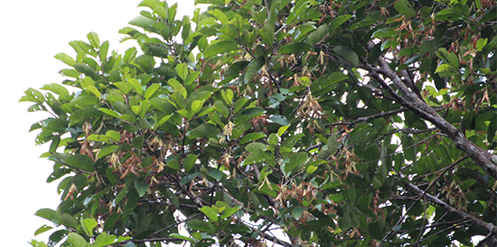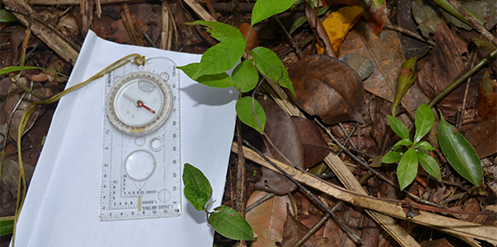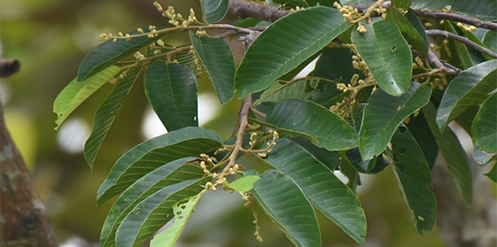May 23, 2018
The Riau Ecosystem Restoration (RER) area in the Kampar Peninsula is home to as many as 152 different plant species. One of them is the Meranti Paya tree, whose scientific name is Shorea platycarpa. In addition to Sumatra, the species is also found in the Malay Peninsula and in Singapore. It holds a Critically Endangered (CR) conservation status issued by the International Union for Conservation of Nature (IUCN).
Due to its habitat, it is easy to understand why the Meranti Paya holds this status. The species is only found along river banks in peat swamp forests, and is rarely found to be growing deep in the forest. In terms of trade, Meranti Paya is known as ‘Light Red Meranti’, meaning that this type of wood is buoyant and therefore easy to transport. The combination of these two traits makes the species an easy target for illegal loggers.

Since the beginning, RER has prioritized Meranti Paya as a target species for conservation and restoration. Besides preserving the species, RER therefore also aims to propagate it by planting it as a restoration plant in its natural habitat along the river. However, there is a main constraint in that saplings for this particular Meranti species are rare, and in the case that they are available, the saplings are usually quite old.
As part of conservation efforts for the species, a survey of smaller Meranti Paya plants along the river was conducted. Two rivers in the Kampar Peninsula – Sangar River and Serkap River – were surveyed. The coordinates of every Meranti Paya tree encountered along these rivers were recorded, and the diameters of the tree trunks were also measured and noted. Additionally, the trees itself were also marked slightly with aluminium paint.

The RER team has carried out phenology monitoring of the species since 2016 to determine its flowering period, fruit-bearing period, as well as the fruit ripening period. The main purpose of this is to collect the seeds of the fruits and to plant the seeds in locations which require restoration – particularly along the rivers. These areas are observed every two months.
In February 2018, after nearly two years of monitoring the species, the RER team was able to witness the blooming of the Meranti Paya species – and not just one tree, but most of the trees along the Serkap River. The species was also seen blooming along the Turip River, in line with the fact that Meranti species are known as ‘masting’ species, which are species which bloom simultaneously.

Many animals, including rats, squirrels, hedgehogs and wild boars enjoy consuming Meranti seeds. As Meranti Paya trees bloom and bear fruit as a concerted species, there is a surplus in the number of seeds available throughout that time. The species is relatively safeguarded then, in that not every tree’s seeds will be victim to the animals at once.
The flowering season is a good opportunity to collect seeds and tree seedlings for the purpose of forest restoration as well as conservation of the CR species.
However, the period between one flowering season to the next differs for each Meranti species. This was the first time that the Meranti Paya species in the Kampar Peninsula has been observed as bearing fruit since 2010, when the existing trees were first planted with seeds. Based on this, it seems that the flowering period for Meranti Paya in the Kampar Peninsula is about seven years.
By: Muhammad Iqbal – RER Ecologist